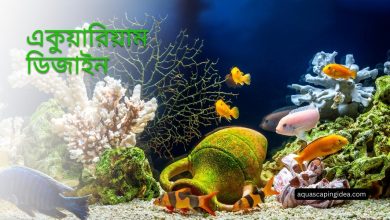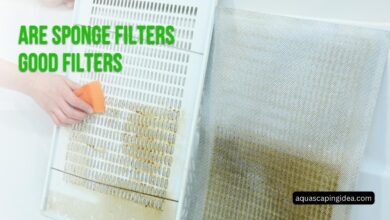What Is The Purpose Of Chemical Filtration?

Chemical filtration is a process used to remove specific chemical compounds or elements from a solution or mixture. Its primary purpose is to purify liquids or gases by separating unwanted substances from the desired components.
This technique is widely employed in various industries, including water treatment, pharmaceuticals, food and beverage processing, and chemical manufacturing. Chemical filtration utilizes specialized media, such as activated carbon, ion exchange resins, or specialized membranes, to selectively adsorb, absorb, or reject the targeted contaminants. By removing impurities, chemical filtration enhances the quality, safety, and usability of the treated material for its intended application.
Harnessing the Purifying Power of Chemical Filtration
Crystal clear water is the hallmark of a healthy aquarium. But achieving gin-clear water clarity takes more than just mechanical filtration to capture debris and biological filtration to process waste. There is an entire class of dissolved elements in aquarium water that require chemical filtration for removal. Read on to understand the critical purpose chemical filtration serves in freshwater and marine systems.
What is Chemical Filtration?
In aquarium filtration systems, chemical filtration refers to the use of specialized chemical media that remove dissolved organic compounds, water discoloration, odors, medications, heavy metals and other pollutants through adsorption. Unlike mechanical filtration targeting suspended particles or biological filtration focusing on visible waste, chemical filtration in aquariums specifically tackles invisible, dissolved substances.
By utilizing highly porous media with an immense surface area through which water contacts, chemical filtration relies on chemical bonds to grab and hold target contaminants within the media. This process, known as adsorption, effectively pulls dissolved elements out of solution. Whether freshwater or saltwater systems, the purpose of chemical aquarium filtration is purification via this adsorption process.
Why Chemical Filtration is Essential
While protein skimmers and ozone effectively serve some chemical filtration functions in saltwater setups, nearly all home aquariums require dedicated chemical filtration media. Here’s a look at the leading reasons:
- Removes yellow/green tints: Tannins from driftwood and some plant material can discolor water to yellowish or brown hues. Chemical media adsorb the large colored organics responsible.
- Odor control: Algae die-offs, waste buildup and dead plant matter contribute unpleasant odors. Carbon media help remove smells.
- Detoxifies heavy metals: Tap water contains heavy metals like copper that are highly toxic at low levels. Specialty resins chemically bind these.
- Lowers excess nutrients: Phosphate removers and ammonia removers help control nutrients that spur nuisance algae growth.
In essence, the purpose of chemical filtration is water clarification and detoxification through the removal of dissolved substances via adsorption to specialty media. It serves as a final polish for already filtered water.
The Chemical Filtration Process
To truly understand its importance, it helps to look closer at the chemical filtration process:
- Water enters the chemical filter, making contact with the media surface. Quality media have up to 1000 sq. meters of surface area per gram.
- Media contain special chemical groups that form strong bonds with target dissolved compounds like tannins, metals, nutrients and organics as water flows past.
- These substances stick to the media through adsorption instead of passing through. Over time, the media surface gets loaded to capacity.
- During maintenance, exhausted media is removed and replaced with fresh media to continue removing contaminants through this chemical process.
In this way, chemical media act like precisely-tuned molecular sponges to extract dissolved waste from the water column. This is the fundamental process that makes chemical filtration work and serve its invaluable purpose.
Optimizing Chemical Filtration
With specialty chemical filter media available for tackling everything from green water to metals, choosing the right products is key to an effective system:
- Activated carbon makes an excellent broad-spectrum chemical filter media for general water clarification and quality. Its high porosity targets organics.
- For removing yellowing/browning from tannins, combine activated carbon with specialty polishing resins like water clarifier.
- Resin-based ammonia remover media help protect sensitive fish prone to ammonia poisoning.
- Phosphate remover media aid algae control by adsorbing excess dissolved phosphates.
Pairing versatile activated carbon with media tailored to an aquarium’s needs maximizes the purification power of chemical filtration. Paying attention to contact/dwell time is also crucial for absorption capacity.
Replacing Chemical Media
While specialty chemical media often only require annual replacement, activated carbon typically loses effectiveness within just 1-2 months. To prevent contaminated media from re-releasing adsorbed compounds, replacement every 3 months maintains peak water clarification.
Watch for warning signs like yellowing water, rising nitrates, or sudden algae growth signaling exhausted media. Regardless, replacing all chemical media at least yearly helps sustain top performance in serving its purpose – maximum aquarium water purity through chemical adsorption.
Maintaining Clear and Healthy Water
By effectively removing an entire class of dissolved organics, odors, colors, toxins and nutrients that bypass mechanical and biological filtration, dedicated chemical media serve an indispensable purpose. Their specialized function within multi-stage filtration helps sustain clear, safe water vital for aquatic life health and prevents deteriorating quality.
While protein skimmers and ozone tackle some chemical removal in saltwater setups, nearly all home freshwater and marine aquariums benefit tremendously from targeted chemical filtration media. Take full advantage of these easily integrated yet powerful purifiers! Your underwater inhabitants will thank you through vibrant coloration and increased activity in their pristine aquatic environment.
Conclusion
Achieving crystal clarity, minimizing odors, removing toxins, and controlling nutrients all fall within the realm of chemical filtration media. While biological and mechanical filtration tackle visible waste, the specifically designed process of adsorption makes chemical filtration invaluable for pulling dissolved elements out of solution for cleaner, healthier water. For both freshwater and marine aquarums, specialized chemical media serve an indispensable purpose as the final stage in multi-level filtration.
Frequently Asked Questions
Can I put chemical filtration media in a hang-on-back or canister filter?
Yes, most canister filters and HOB power filters contain built-in chambers compatible with loose chemical filter media or disposable chemical filter cartridges.
What’s the difference between mechanical and chemical filtration?
Mechanical filtration targets suspended visible particles while chemical filtration in aquariums focuses specifically on dissolved, invisible elements using adsorption.
Should chemical filter media be replaced gradually or all at once?
For safety, replace media gradually. First soak new media separately for a day before adding to the filter. Monitor ammonia, pH and hardness closely several weeks after for stability.
Is granular activated carbon better than carbon pad media?
Loose granular carbon maximizes exposure through increased water contact. However, pads avoid dust and simplify replacement. Using both pads and granular carbon boosts purification.
Can I reuse chemical filter media to save money?
No, used media should always be discarded and replaced with fresh products. Reusing exhausted media leads to the release of contaminants back into aquarium water.





One Comment